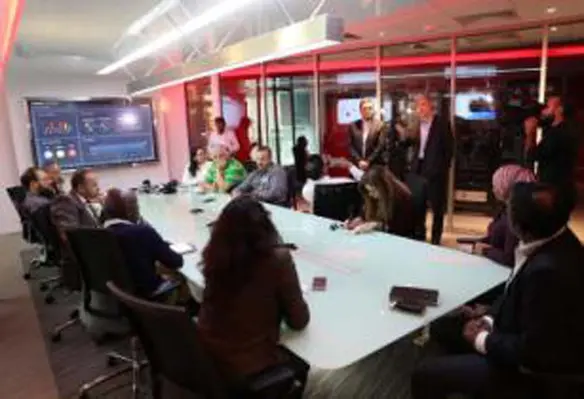Industrial Insights
Industrial Insights
- Details
- Deblina Roy
- Fire Safety
- Topic: Fire Safety
- Date: 28 February, 2018
- Year: 2018
Trelleborg’s offshore operation has launched its next-generation Firestop™ material to provide fire protection solutions across industries
- Details
- Deblina Roy
- Industrial
- Topic: Industrial
- Date: 27 February, 2018
- Year: 2018
Bauer Kompressoren has provided the business trend in the GCC region, noting that with some strategic decisions taken in GCC oil and gas market, the company performed well from Q2 2017 onwards
- Details
- Deblina Roy
- Industrial
- Topic: Industrial
- Date: 26 February, 2018
- Year: 2018
Peli-Hardigg™, the world’s largest manufacturer of military and aerospace approved reusable plastic shipping and storage containers, has presented the Min Mac Rack™ and V-Series Rack Mount cases at AFCEA
- Details
- Deblina Roy
- Security
- Topic: Security
- Date: 25 February, 2018
- Year: 2018
Honeywell has introduced new connected worker solution to improve productivity by connecting their existing inventory of personal protective equipment (PPE) using cloud-based safety suite software and specialised electronic tags
- Details
- Deblina Roy
- Security
- Topic: Security
- Date: 22 February, 2018
- Year: 2018
Panasonic Corporation and Trend Micro Incorporated have partnered to develop cyber security solution to detect and prevent cyber-attacks against autonomous and connected cars
- Details
- Deblina Roy
- Security
- Topic: Security
- Date: 21 February, 2018
- Year: 2018
Oman’s BankDhofar has received the payments card industry data security standard (PCI DSS) version 3.2 compliance certification, one of the most rigorous industry-recogniaed payment-card security standards globally
- Details
- Deblina Roy
- Security
- Topic: Security
- Date: 20 February, 2018
- Year: 2018
Dormakaba has introduced secure access temporary (SAT) function for mechanical cylinder to enhance safety of occupants and property
- Details
- Deblina Roy
- Industrial
- Topic: Industrial
- Date: 19 February, 2018
- Year: 2018
Unifrax I LLC has launched its next-generation Insulfrax® LTX Products, aiming to improve both thermal performance and product handling
- Details
- Deblina Roy
- Industrial
- Topic: Industrial
- Date: 18 February, 2018
- Year: 2018
ERGIL Storagetech, designer and manufacturer of storage tank equipment, has received ATEX directive 94/9/EC Certificate deflagration type end-of-line flame arresters series from two inch to eight inch which is approved to EN ISO 16852
- Details
- Deblina Roy
- Security
- Topic: Security
- Date: 15 February, 2018
- Year: 2018
Google has launched an online safety course in Arabic for teachers and parents on the safer internet day
- Details
- Deblina Roy
- Security
- Topic: Security
- Date: 13 February, 2018
- Year: 2018
Honeywell has launched its first industrial cyber security centre of excellence (COE) in Dubai, which will test and demonstrate process control network vulnerabilities, train customers with real-time attack simulations and provide advanced customer consultations
- Details
- Deblina Roy
- Security
- Topic: Security
- Date: 12 February, 2018
- Year: 2018
Axis Communications has launched Axis Device Manager, a comprehensive on-premise device management tool, aiming to provide a secure way to manage all major installation and operational device management tasks












